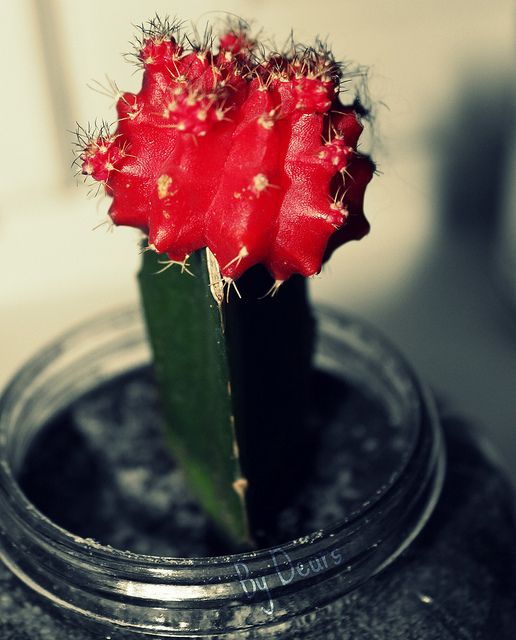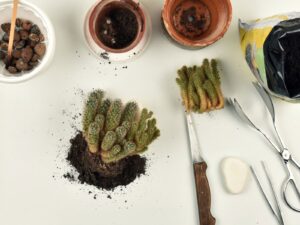The breathtaking aesthetics of cacti present an undeniable allure to both novice gardeners and seasoned horticulturists. Among these spiny wonders, there exists a particularly captivating specimen known as the Red Ball Cactus, or more formally the “Ruby Ball” Cactus (Gymnocalycium mihanovichii). This article delves into the fascinating attributes of this unique plant, focusing on its striking appearance, intriguing biology, and essential care practices, promising a shift in perspective on this remarkable succulent.
Before diving into care techniques, one must appreciate what makes the Red Ball Cactus an extraordinary addition to any plant enthusiast’s collection. With its vibrant, spherical, and vividly red or pink colored top—often resembling a jewel—this cactus is a grafted hybrid. The portion of the cactus that displays the brilliant hue is actually a mutated strain of the Gymnocalycium species, which has lost its chlorophyll. This gives the Red Ball its vivid pigmentation and leads to its distinctiveness in the landscape of houseplants. However, in its grafted form, it relies on its rootstock—the green, photosynthesizing cactus (often a Hylocereus variety)—to provide essential sustenance through photosynthesis.
The appearance of the Red Ball Cactus is not merely eye candy; it embodies a fascinating survival mechanism. This mutation, while visually stunning, renders the top portion incapable of producing its own food. As a result, the grafting process is vital to its survival, showcasing a delicate balance of nature’s artistry and resilience. Placing a Ruby Ball Cactus alongside other green varieties can cultivate a visually striking tableau, vivifying any indoor space or garden.
Despite its enchanting charm, cultivating a healthy Red Ball Cactus requires a thorough understanding of its specific needs and environmental preferences.
Understanding Light Requirements for Optimal Growth
Upon acquiring a Red Ball Cactus, it is crucial to consider light as a fundamental element of its care. This cactus thrives in bright, indirect sunlight for several hours each day. A location near a south or west-facing window is often ideal. However, direct sunlight can be detrimental, especially during the hottest months, leading to sunburned patches on its vivid surface. A gentle, filtered light allows the plant to bask in brightness while avoiding the harsh rays that could damage its striking coloration.
Moreover, if one begins to notice a stretching or elongation of the cactus, this is an indication it is not receiving enough light. In such cases, adjusting the placement or even utilizing artificial grow lights can rectify the inadequacy, promoting healthy growth and preserving its distinctive form.
Watering Regimens: Striking the Right Balance
Watering is one of the most critical aspects of caring for the Red Ball Cactus, as succulents generally exhibit a pronounced sensitivity to moisture levels. Overwatering is by far one of the most common mistakes, leading to root rot—a condition that can be fatal to the cactus. Instead of frequent watering, a more measured approach is advisable. It is best to allow the soil to dry out completely before the next watering. During the growing season (spring and summer), watering may be necessary every 2-3 weeks, but as autumn and winter approach, frequency can drop significantly to once a month or even less.
For optimal results, utilize well-draining soil such as a cactus-specific mix. This blend offers essential drainage properties that prevent standing water. Ensure that the pot includes adequate drainage holes, as this feature further reduces the possibility of root rot.
Fertilization: Nourishing the Ruby Ball Cactus
Providing nutrients to the Red Ball Cactus can enhance its health and vibrancy. During the active growing season, a diluted, balanced, liquid fertilizer specifically formulated for cacti can be employed. Fertilizing should occur approximately once a month, encouraging robust growth without overwhelming the plant. However, in the dormant months, fertilization should be curtailed to allow the cactus to rest and rejuvenate.
A vital aspect of care is to ensure that fertilization is conducted on wet soil, thereby preventing root burn—a common issue when applying fertilizer to dry soil. Adopting this practice ensures that the nutrients are absorbed effectively while minimizing damage to the delicate root system.
Repotting: Timing and Technique
The Ruby Ball Cactus benefits from repotting when it outgrows its pot or if the soil has degraded. Generally, every few years is suitable for this plant; however, be cautious when handling it, as the spines can be sharp. The ideal time for repotting is during the early spring, heralding the new growing season. Utilize fresh, well-draining cactus soil, ensuring that the new pot has sufficient drainage. After repotting, provide the cactus time to acclimatize before resuming a regular watering schedule.
In conclusion, the Red Ball Cactus is not just a plant; it is an extraordinary testament to nature’s innovation. Its striking beauty commands attention, while its unique characteristics invite admiration and curiosity. With proper care—considering its light, watering, fertilization, and repotting needs—you can successfully cultivate this stunning succulent. By embracing the art and science of horticulture, enthusiasts can turn these vibrant cacti into marvels within their green spaces, transforming one’s perspective on indoor gardening altogether. The Ruby Ball Cactus embodies not just the appeal of cacti but also the marvel of a living organism that thrives with a little extra understanding and care.





Leave a Comment